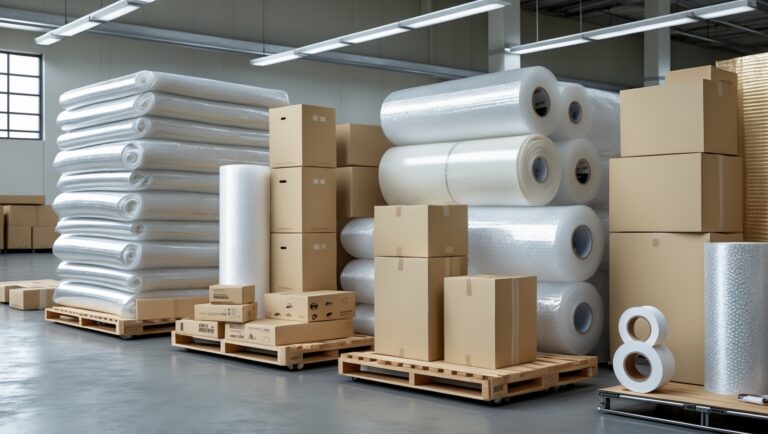Moving Company Packing Protocols: Streamlining Operations for Fewer Damages
Introduction: Why Packing Protocols Make or Break Moving Operations
Moving companies live and die by their reputation for safety, efficiency, and reliability. Yet, one of the most common sources of customer complaints and profit loss is damaged belongings. Often, these losses stem from inconsistent or poorly executed packing processes. That’s why establishing and consistently following robust packing protocols isn’t just about wrapping things up — it’s about protecting your bottom line, your crew’s safety, and your client’s peace of mind.
In this in-depth guide, we’ll walk through the essential elements of moving company packing protocols. From the science of materials selection to real-world workflow tips, you’ll learn how to standardize your packing approach, train your team, and implement checks that dramatically reduce damage claims. Whether you operate a small moving crew or a growing multi-truck fleet, these protocols are designed to be practical, scalable, and immediately actionable.
By the end, you’ll have a step-by-step roadmap for transforming packing from a headache into one of your company’s strongest selling points. Let’s get started.
Understanding the Impact: Why Packing Protocols Matter
Reducing Damage Claims
Every damage claim eats into your profit and erodes client trust. Industry studies show that the majority of claims come from preventable packing errors — improper cushioning, inadequate sealing, and mismatched box sizing, for example. Establishing a packing protocol helps eliminate these errors, providing a consistent standard for every move.
Increasing Efficiency
When your crew knows exactly how to pack, what materials to use, and the order of operations, jobs move faster and with fewer mistakes. This not only saves labor costs but also reduces the risk of injury from overpacked or poorly balanced boxes.
Enhancing Professional Image
Clients notice when movers operate with precision and care. Demonstrating a clear, methodical packing process reassures customers and can lead to more referrals and positive reviews.
Core Elements of a Successful Packing Protocol
Standardized Material Selection
- Box Sizes: Maintain an inventory of small, medium, large, and specialty boxes. Use small boxes for heavy items (books, tools), medium for general household goods, and large for light, bulky items (bedding, pillows).
- Protective Materials: Stock quality bubble wrap, packing paper, furniture pads, and corner protectors. Avoid using newsprint for delicate items to prevent ink transfer.
- Sealing Tape: Invest in commercial-grade packing tape, not generic household tape. Train staff to use the H-taping method for maximum strength.
Packing Room-by-Room: A Sequential Approach
Start packing in seldom-used rooms and progress to daily-use areas. This helps minimize disruption for clients and makes tracking packed items easier.
- Label each box with contents, destination room, and a unique number for inventory tracking.
- Keep an inventory log (paper or digital) to monitor each box’s status from packing through delivery.
Weight Distribution and Box Limits
Set and enforce weight limits per box (typically 50 lbs/23 kg). Overpacked boxes are a leading cause of dropped items and injuries. Use scales to verify box weights during training and spot checks.
Fragile and High-Value Items
- Wrap each fragile item individually with bubble wrap or foam sheets.
- Double-box high-value or extremely delicate items, filling all voids with packing material.
- Mark boxes clearly as “FRAGILE” and load them last for easy access and priority placement on the truck.
Step-by-Step Packing Workflow for Moving Crews
1. Preparation and Materials Check
- Inventory all required packing materials before starting.
- Set up a designated packing station with easy access to boxes, tape, markers, and protective materials.
- Review client inventory and flag any unusually large, heavy, or fragile items for special handling.
2. Pre-Packing Documentation
- Photograph high-value or pre-damaged items (with client consent).
- Document the condition of furniture and electronics.
- Update your inventory log as items are packed.
3. Packing by Item Category
- Books and Media: Use small boxes, pack tightly, and fill gaps with paper to prevent shifting.
- Kitchenware: Wrap glassware individually, stack plates vertically, and use cell dividers for glasses.
- Clothing: Use wardrobe boxes for hanging items to avoid wrinkles. Fold and pack off-season clothes in large boxes.
- Electronics: Use original packaging if available. Otherwise, wrap components separately and cushion generously.
- Artwork and Mirrors: Use mirror boxes and corner protectors. Wrap surfaces in glassine or bubble wrap.
4. Sealing and Labeling
- Seal all boxes with H-taping technique for added strength.
- Label at least two sides and the top of each box with room, contents, and handling instructions.
- Use color-coded labels or stickers for quick visual sorting during unloading.
5. Staging for Loading
- Group boxes by room and fragility level.
- Stack heavier boxes on the bottom, lighter and fragile boxes on top.
- Use dollies or carts for efficient movement to the truck.
Training Your Crew: Best Practices for Consistency
Hands-On Demonstrations
Incorporate regular, hands-on training sessions where crew members can practice packing various item types. Use real boxes and materials, and encourage questions and feedback.
Written Protocols and Checklists
Provide every team member with a written packing protocol and checklist. Laminate these guides and keep them in crew vehicles for easy reference. Checklists should cover:
- Material selection
- Packing order
- Labeling standards
- Weight and sealing checks
Quality Control Audits
Assign a lead packer or supervisor to audit randomly selected boxes before loading. Look for consistent packing, proper labeling, and adherence to weight limits. Give regular feedback and recognize crew members who consistently meet protocol standards.
Tools and Equipment That Streamline Packing
- Box Resizers: Help custom-fit boxes to awkward items, reducing shifting and potential damage.
- Digital Scales: Ensure box weights are within safe limits.
- Tape Dispensers: Speed up sealing and reduce tape waste.
- Label Printers: Produce clear, durable labels for easy box identification.
- Furniture Dollies and Straps: Prevent injuries and make moving heavy, packed items safer.
Investing in the right equipment pays off in faster operations and fewer breakages.
Reducing Damages: Pro Tips and Advanced Tactics
- Void Fillers: Use air pillows or crumpled paper to fill empty spaces in boxes — never leave room for items to shift.
- Specialty Box Solutions: Offer dish packs, lamp boxes, and mattress bags as upsell options to clients for added protection (and profit).
- Weatherproofing: Use plastic wrap or shrink wrap on boxes for moves during inclement weather to prevent water damage.
- Pre-Load Inspections: Always inspect boxes for bulging, weak spots, or improper sealing before loading onto the truck.
Monitoring and Improving Your Packing Protocol
Track Damage Rates
Maintain a log of all damage claims and investigate the root cause of each incident. Is it a materials issue? Crew error? Lack of training? Use this data to refine your protocol and retrain as needed.
Solicit Client Feedback
Ask clients about their experience with your packing process. Did they feel their belongings were handled with care? Were boxes clearly labeled and easy to unpack? Use this feedback to improve your service and marketing materials.
Regular Protocol Reviews
Set quarterly or bi-annual reviews of your packing process. Involve your crew in these discussions; often, front-line workers have the best suggestions for streamlining or improving operations.
Case Example: How Packing Protocols Reduced Claims by 60%
BrightMove Logistics, a regional moving company, implemented a standardized packing protocol in early 2023. Within six months, their damage claims dropped by 60%. The protocol included:
- Mandatory hands-on training for all new hires
- Weekly quality audits by supervisors
- Digital inventory tracking and photo documentation
- Client post-move surveys focused on packing quality
The result? Not only did claims decrease, but client satisfaction scores rose, and word-of-mouth referrals increased by 30%. The company also noticed improved morale among crews, as clear expectations and recognition of good work became part of the culture.
Conclusion: Making Packing Protocols Your Competitive Edge
Moving is a high-stakes business where one broken vase or scratched table can cost you a client — and your reputation. But with professional packing protocols, you can turn this vulnerability into a strength. By standardizing materials, training your crew, investing in the right tools, and regularly reviewing your process, you set a high bar for quality that sets you apart from the competition.
Clients notice the difference when movers handle their belongings with care and precision. Reduced damage claims mean fewer headaches, lower costs, and higher profits. Perhaps most importantly, a well-oiled packing protocol empowers your team to work confidently and efficiently, making every job smoother and more rewarding.
Make packing excellence part of your company’s DNA. Start by reviewing your current process, involve your crew in refining it, and never stop looking for small improvements. In an industry where details matter, a robust packing protocol is one of the smartest investments you can make — for your clients, your crew, and your business’s future.






